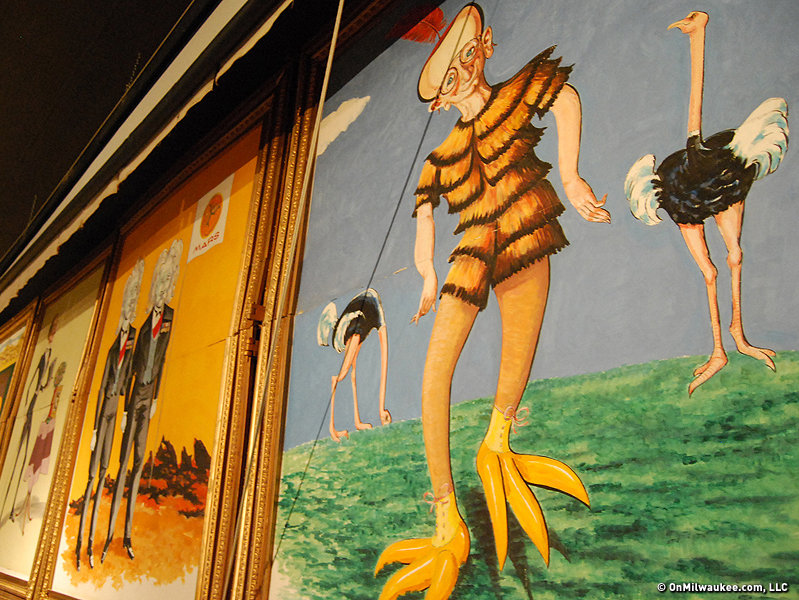SARASOTA, Fla. -- By today's standards, the circus is more of a sideshow act than the pinnacle of modern entertainment. But at the turn of the 20th century, the traveling circus was the height of American amusement and intrigue. A million-dollar industry even during the Depression era, it was The Greatest Show on Earth.
The circus tradition in America traces its timeline back to the late 1700s -- not too long after the country was founded -- but its booming 20-year peak from about 1920 to 1940 is arguably attributed to a set of several visionary Wisconsinites.
The five Ringling brothers -- Al, Alf, Charles, John and Otto -- were just boys when they first saw a circus arrive in town. Fascinated and motivated, they agreed to start their own and in 1884 the Yankee Robinson and Ringling Brothers circus was born in Baraboo.
What began as a small, wagon-drawn affair with a single clown and a few animals grew quickly and within five years the brothers were traveling across the country by train. At the start of WWI, the show had more than 1,000 personnel, 335 horses and a menagerie that included 26 elephants and 16 camels, all traveling aboard 92 railroad cars. Admission was $.50 for adults and $.25 for children.
But when the US entered the war, patronage dropped dramatically and many circus employees left for the battlefield. In hard economic times, the Ringling Brothers joined forces with the Barnum & Bailey Circus -- another Wisconsin-born show of similar proportions -- to establish the Ringling Bros. and Barnum and Bailey Combined Shows. They marketed themselves as "The Greatest Show on Earth" and debuted at Madison Square Garden on March 29, 1919.
Baraboo was the headquarters of the circus for 33 years and is now home to the Circus World Museum, a large complex built in 1959 dedicated to highlighting Wisconsin's rich circus history.
But by 1927, John Ringling was the only surviving Ringling brother and he moved his circus's winter headquarters to Sarasota, Fla., where he'd been wintering with his wife, Mabel, since 1909.
You can still see the Ringling's legacy there today, marked by the John and Mable Ringling Museum of Art, which is operated by Florida State University. There are many components to this 66-acre estate that make it a worthy tourist attraction.
The art museum itself opened in 1931 to showcase the immense and worldly art collections of John and Mable, who purchased many prominent works by Titian, Veronese, Rubens, Hals, and Velazquez and acquired several Cypriot, Greek and Roman antiquities from other museums. Now the official state art museum of Florida, it offers 21 galleries that display fine European, American, and Asian works. Current exhibitions include "Ringling Retro: Modern and Contemporary Art: (though Oct. 26) and "Phantasmagoria: Spectors of Absence" (through Aug. 10).
Like Baraboo's Circus World Museum, Sarasota rightfully has its own historical dedication called the Ringling Museum of the American Circus, which opened in 1948. Here you'll find magnificent displays of rare and authentic circus equipment, including hand-carved wagons, posters and costumes, but the highlight is definitely the intricately designed Howard Bros. Circus model, a miniature replica of Ringling Bros. and Barnum & Bailey Circus from 1919 to 1938. Constructed by Howard Tibblas over the course of 50 years, the impressive project occupies 3,800 square feet with eight main tents, 152 wagons, 1,300 circus performers and workers, more than 800 animals and a 59-car train.
Your visit should also include the bayside Ca d'Zan. Although it means "House of John" in a Venetian dialect, it's by all definitions a monstrous mansion, home to John and Mable Ringling. Guided tours take you through the first two floors -- and the second two for an additional fee -- of the dream house that was designed by New York architect Dwight James Braum and predominantly decorated by Mable in Venetian gothic style.
Make a day trip of it and explore Mable's victorious rose garden, the 18th-century Asolo Theater and acres of natural park. A trip to the estate costs $19 for adults, $16 for seniors and $6 for students and children 17 and younger.
OnMilwaukee.com staff writer Julie Lawrence grew up in Wauwatosa and has lived her whole life in the Milwaukee area.
As any “word nerd” can attest, you never know when inspiration will strike, so from a very early age Julie has rarely been seen sans pen and little notebook. At the University of Wisconsin-Milwaukee it seemed only natural that she major in journalism. When OnMilwaukee.com offered her an avenue to combine her writing and the city she knows and loves in late 2004, she knew it was meant to be. Around the office, she answers to a plethora of nicknames, including “Lar,” (short for “Larry,” which is short for “Lawrence”) as well as the mysteriously-sourced “Bill Murray.”



